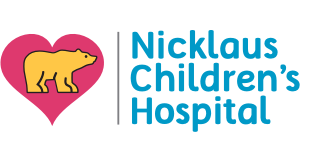Search results
-
Aortic Stenosis for Parents
Aortic stenosis means the aortic valve is too small, narrow, or stiff. Many people have no symptoms, but kids with more severe cases will need surgery so that blood flows properly through the body.
-
A to Z: Hypoplastic Left Heart Syndrome for Parents
Learn about hypoplastic left heart syndrome, a rare and serious defect of the heart.
-
Double Outlet Right Ventricle (DORV) for Parents
Double outlet right ventricle (DORV) is a heart defect where the aorta connects to the heart in the wrong place.
-
A to Z: Cardiomegaly for Parents
Diseases can put added strain on the heart. As it enlarges to pump more blood to the body, the heart muscle weakens and does not work well in this condition. Read more here.
-
Pulmonary Stenosis for Parents
Pulmonary stenosis means the pulmonary valve is too small, narrow, or stiff. Many people have no symptoms, but kids with more severe cases will need surgery so that blood flows properly through the body.
-
Tricuspid Atresia for Parents
Tricuspid atresia is a congenital heart defect. A baby born with tricuspid atresia often has serious symptoms soon after birth because blood flow to the lungs is much less than normal.
-
Extracorporeal Membrane Oxygenation (ECMO) for Parents
Extracorporeal membrane oxygenation (ECMO) is the use of a machine to do the work that the heart and lungs normally do.
-
Ebstein Anomaly for Parents
Ebstein anomaly is a rare heart defect that affects the tricuspid valve. It can cause problems that range from very mild to very serious.
-
A to Z: Pulmonic Valvular Stenosis for Parents
Learn about this congenital heart defect that alters blood flow through the heart and lungs and can affect a child's growth and circulation.
-
Myocarditis for Parents
The muscle that makes up the heart is called the myocardium. Myocarditis is when this muscle gets inflamed (swollen).


 Note: All information is for educational purposes only. For specific medical advice,
diagnoses, and treatment, consult your doctor.
Note: All information is for educational purposes only. For specific medical advice,
diagnoses, and treatment, consult your doctor.